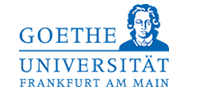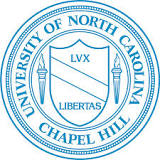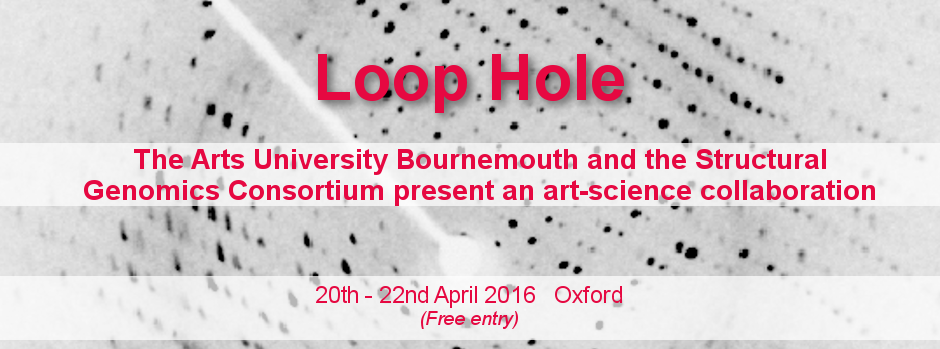 |
 |
 |
 |
 |
 |

Medical Science Teaching Centre | University Church of St. Mary the Virgin |
“Loop Hole” is an exhibition that showcases recent outcomes from a collaborative partnership between the Structural Genomics Consortium, part of the Nuffield Department of Medicine, University of Oxford and the Arts University Bournemouth. The SGC is a public/private partnership focused on high throughput crystallography and drug design, who’s aim is to accelerate drug discovery by establishing a network of scientists with open access to SGC’s results. The Arts University Bournemouth is one of only a few specialist arts universities delivering subjects in art, design, media and performance from undergraduate to doctoral level, and engaging in nationally and internationally recognized research and knowledge transfer in the arts. The collaboration makes a valuable contribution in creating a dialogue between art and science, and in bridging the gap between two forms of knowledge – scientific and aesthetic.
Last year, as part of a Wellcome Trust funded public engagement initiative, the SGC invited 21 undergraduates from AUB to develop artworks and design concepts in response to their drug research activities, and to the themes of biotechnology and medicine more broadly. The young artists and designers in this exhibition responded in very diverse ways, and with very different aims and interests. Some sought to visualize the complex biological mechanisms involved in disease and treatment, and to transform scientific knowledge of these processes into experiential forms of understanding. As such, one of the exhibition’s aims is to test if creative approaches are an effective way of communicating specialist scientific information.
Others focused less on the pure science and more on the impact that contemporary medical research and biotechnology have had, and continue to have, on broader society. In particular, the social, cultural and philosophical consequences of a genomic understanding of the human and of disease, which SGC exemplifies. Broadly, these participants are concerned with the “culture of medicine”. For example, George Marguet-Pew examines cultural attitudes to medicine and disease in a two channel video piece that juxtaposes images of ritualistic purification practices with images of cleaning routines used in biomedical research, thereby drawing analogies and making connections between health and healing practices in both scientific and non-scientific contexts.
Others examine more specifically the cultural impact of biotechnology, how it effects our definitions of “life”, notions of selfhood, and implications of ownership of our own body and its data. Clive Timothy’s subject is the perception of race, identity and disease, drawing analogies between the body as one kind of informatic system and “post-internet” culture as another. Rosie Stephens expresses well the molecular view of the human body that contemporary medicine exemplifies. In a sculpture consisting of a glass tank of water that holds various elements in solution to the same quantities as they occur in the artist’s own body. Philosopher Eugene Thacker’s thoughts provide a useful context to these two artists’ work. He considers that biotechnology brings with it a new concept of human life in which we see ourselves and are seen as “bioinformatic bodies”. In his view, genomic science, such as that carried out by SGC, defines human life in a certain way by the particular way it brings together “hardware, software and wetware” (i.e. engineering, computing and living matter) into a set of relations.
Others still, have taken as their subject the culture of scientific research itself. Natasha Salkeld, fascinated with human behaviour, brings a lighthearted tone to the exhibition in a video that reveals how SGC scientists anthropomorphise their austere and hi-tech laboratory machines by assigning human names to them. Similarly, Bear Taylor is interested in the practice of science, and has mapped the physical movements of a laboratory technician in their use of equipment and instruments, and translated these through the artist’s movement to create a painting. Jane Lee has created an interactive sculpture that, visually, represents the crystalline structures from protein crystallography, but also, as an image of a network, functions as a metaphor for SGC’s innovative “open access” approach to research.
Ellie Williams at SGC says, “the opportunity to collaborate with artists from the AUB has given us a chance to see our research through new eyes and get a fresh perspective on how our work impacts others and also how others can impact our work. This collaboration between researchers at the SGC and the artists of the AUB is a unique way to engage beyond the lab and for us as scientists to not only broaden our horizons but to help discover new connections between our work and the people it impacts - to discover new ways of explaining what we do and why to a wider audience.”
